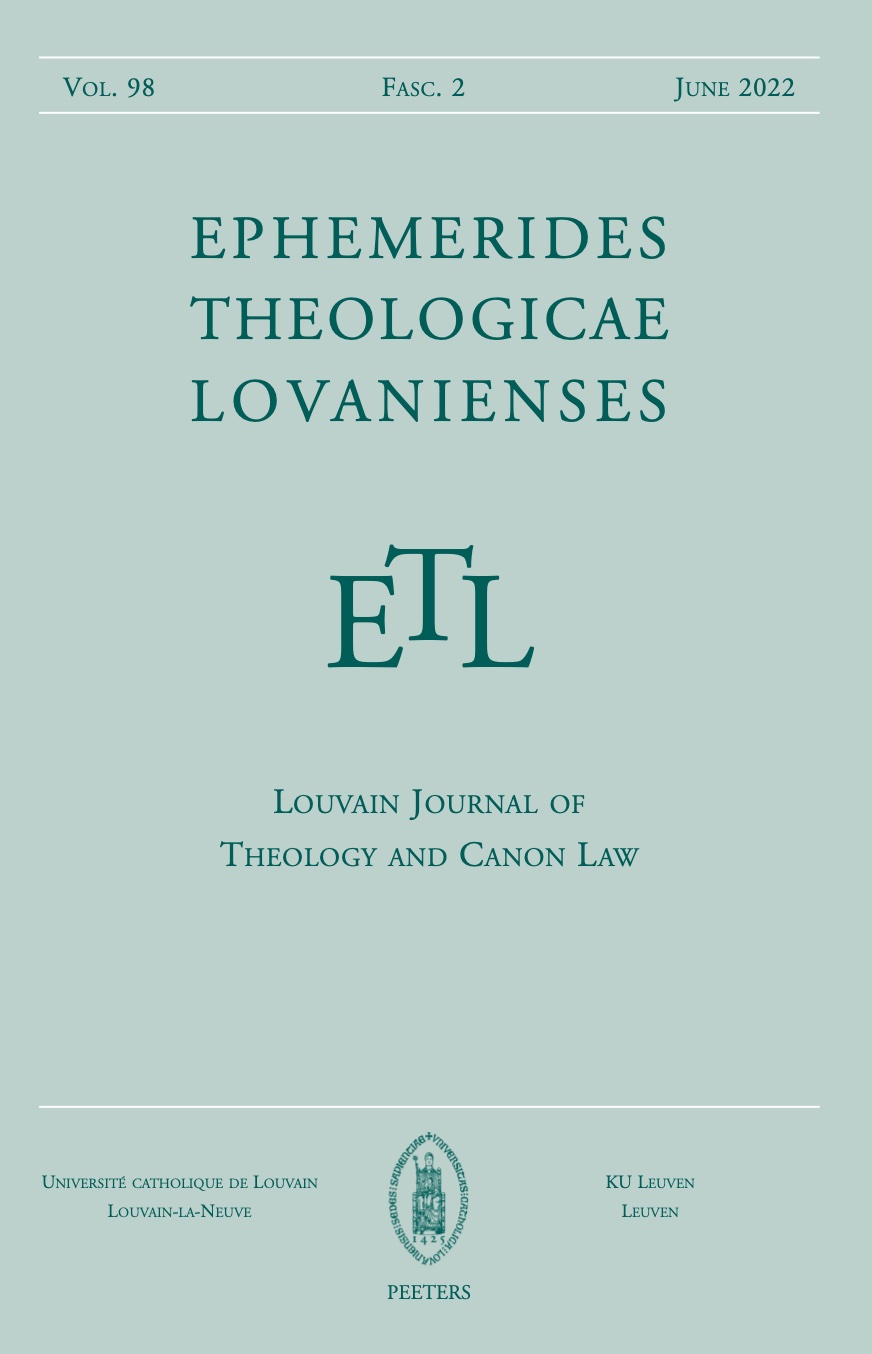 previous article in this issue previous article in this issue | next article in this issue  |

Preview first page |
Document Details : Title: 'Violence' in Amos 3,10 and 6,3 Author(s): SNYMAN, S.D. Journal: Ephemerides Theologicae Lovanienses Volume: 71 Issue: 1 Date: April 1995 Pages: 30-47 DOI: 10.2143/ETL.71.1.504878 Abstract : For some time now, research into the problem of violence in the Old Testament has focused primarily on the phenomenon as such, as it is recorded mainly in the narrative parts of the Old Testament, rather than prophetic pronouncements on the question. While considerable attention has been paid to the issue of violence in the Pentateuch and narrative parts of the Old Testament, it would be an overstatement to claim that no attention has been paid to the problem in the prophetic literature of the Old Testament. There are numerous places where the prophets do speak out against violence and it is remarkable that the prophets of the Old Testament also look forward to a time when it will no longer confront us. On more than one occasion the prophets themselves were also victims of violence (Amos, Jeremiah, the Servant of Yahweh in Deutero-Isaiah). Yet, in spite of the research already done on the problem of violence in the prophetic literature, there is still no comprehensive perspective on this question in the prophetic books of the Old Testament. In this article an inquiry will be made into the way in which the book of Amos views violence. For the sake of brevity, and to keep the investigation within controllable limits, only the texts where the word חמס occurs will be examined, i.e., in 3,10 and 6,3. The questions raised in this contribution are: Firstly, what is regarded as violence (חמס) in 3,10 and 6,3 respectively? Secondly, is there any relationship between the texts which use חמס? Thirdly, what is the verdict on violence? |
|


